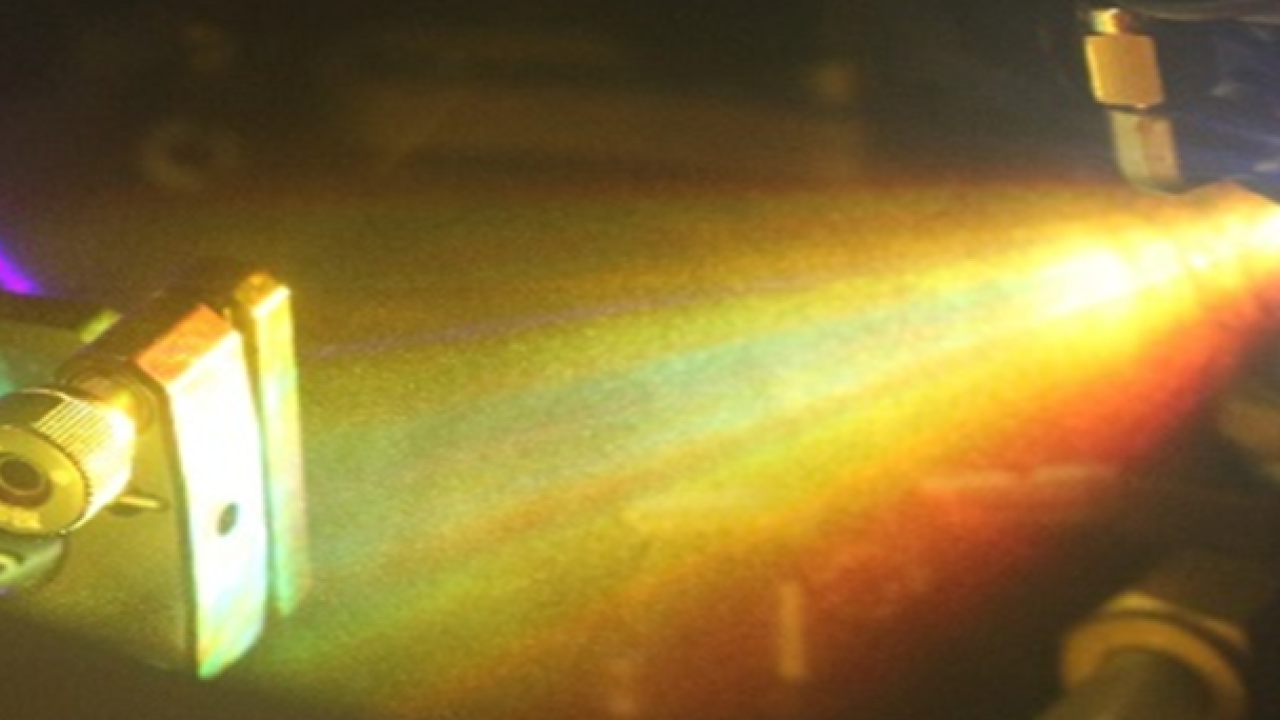Ohio State Marion Associate Professor of Physics, Chris Orban, is setting his sights to control and optimize the use of ultra-intense lasers in a new project funded by the National Science Foundation and the Department of Energy.
“By far the strongest electric and magnetic fields that we know how to create is through using ultra-intense laser systems,” said Orban. “The problem is that you don’t just have to create these fields -- you have to control the laser interactions for these laser systems to produce real world applications for industry and defense.”
 Orban is the principal investigator of a federally funded project to address this problem using methods from machine learning and artificial intelligence. According to the description of the award, the “project will investigate two methods to enhance intense laser interactions in order to accelerate protons and ions.”
Orban is the principal investigator of a federally funded project to address this problem using methods from machine learning and artificial intelligence. According to the description of the award, the “project will investigate two methods to enhance intense laser interactions in order to accelerate protons and ions.”
The funding for the grant comes from a program within the National Science Foundation and the Department of Energy called the NSF/DOE Partnership in Basic Plasma Science and Engineering. The award for Orban’s research is close to $750,000. The title of the project is “Enhancing Laser Based Ion Sources with High-Rate Data Techniques.”
“The more I thought about it,” Orban commented, “I was surprised at how few studies there have been to apply artificial intelligence and machine learning to ultra-intense laser systems.”
An important partner on the project is the Extreme Light research group at Wright Patterson Air Force Base in Dayton, Ohio. The group there operates one of the most intense lasers owned by the Department of Defense. Orban is a longtime collaborator with the base. Prior to joining the faculty at Ohio State Marion, he worked as a postdoctoral researcher with the Air Force Research Lab in Dayton. Other partners on the grant include Miami University of Ohio and California State University at Channel Islands.
In the long term, Orban hopes that the research will aid efforts to produce fusion in the lab, a potential source of carbon-free energy. In August 2021, Lawrence Livermore National Laboratory in California made headlines in a press release about the National Ignition Facility, which is the world’s largest laser system. There, for the first time, they were able to release almost as much fusion energy as the energy that was used to compress and heat the fusion target.
"Whether or not my research has any impact on those efforts, many of the undergrads and grad students I work with go on to work at government research labs, including Lawrence Livermore," said Orban.
Thanks to the additional grant funds, Orban is looking for undergrads from Marion and Columbus to work on the project. Students can reach out to him at orban@physics.osu.edu.
